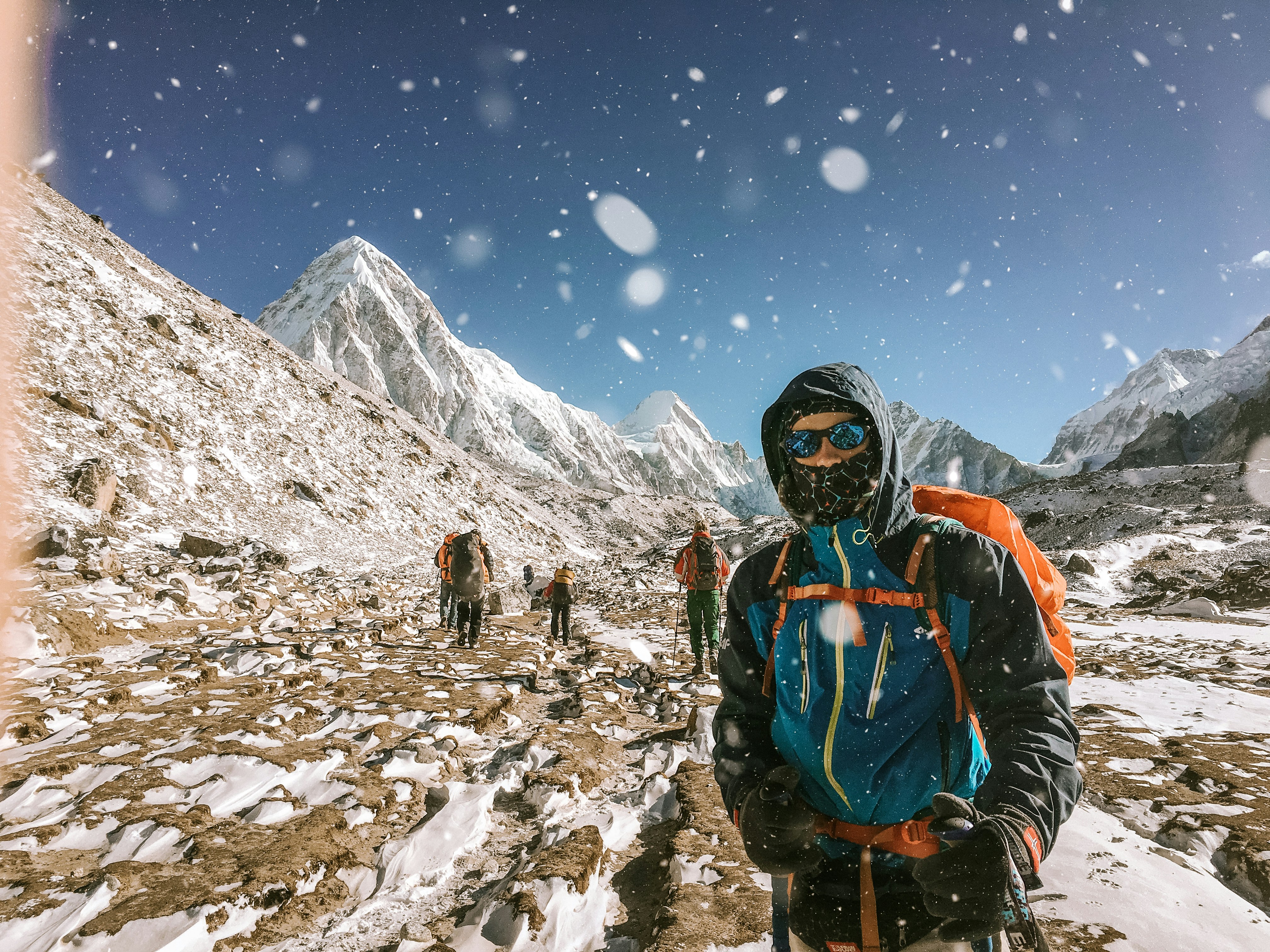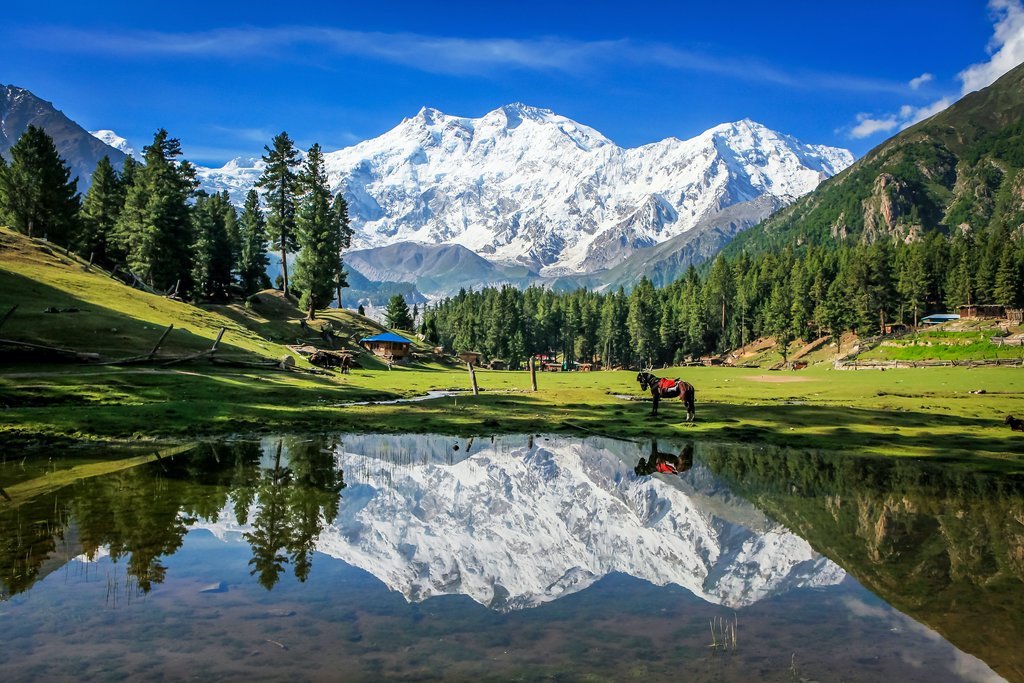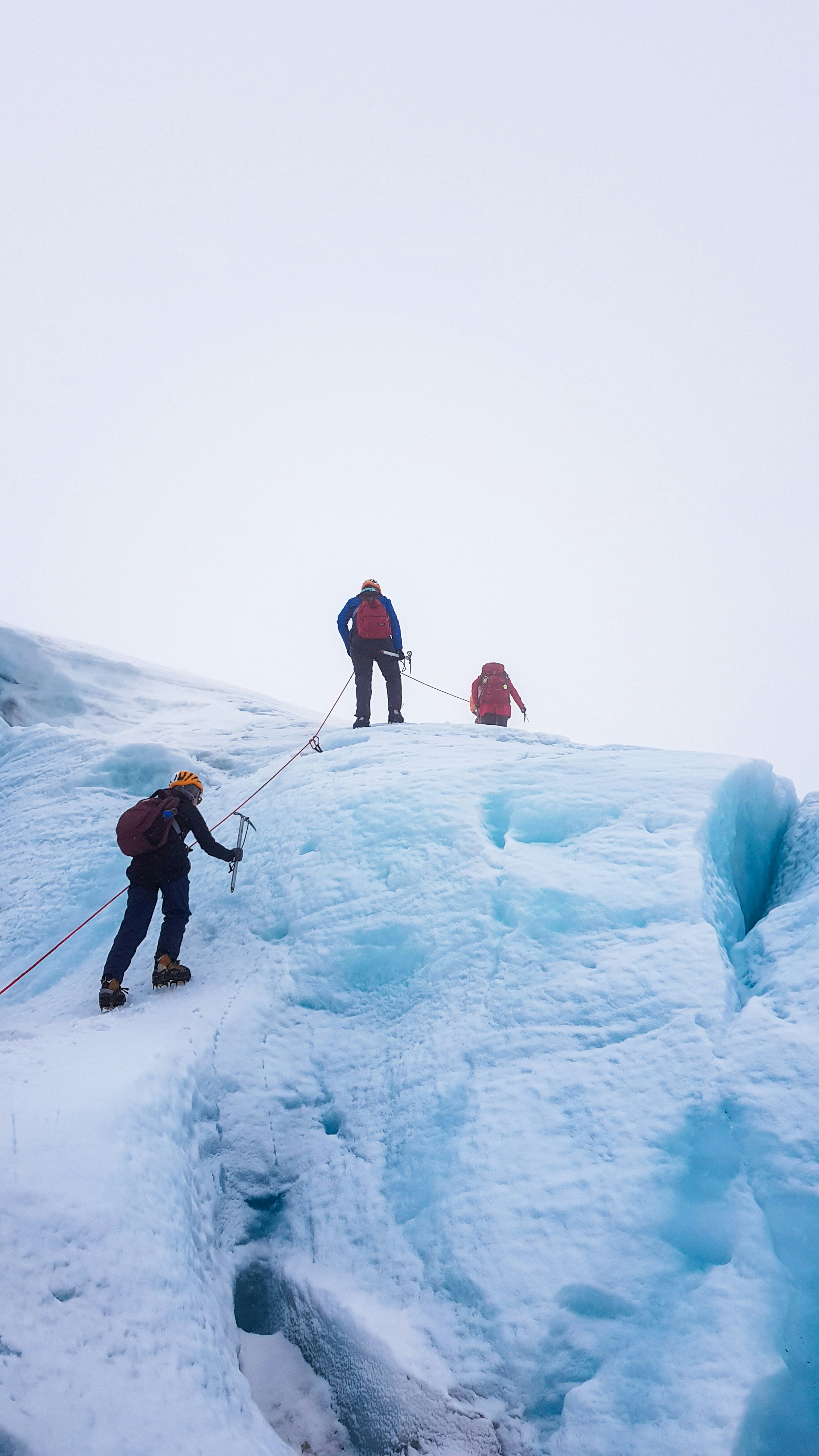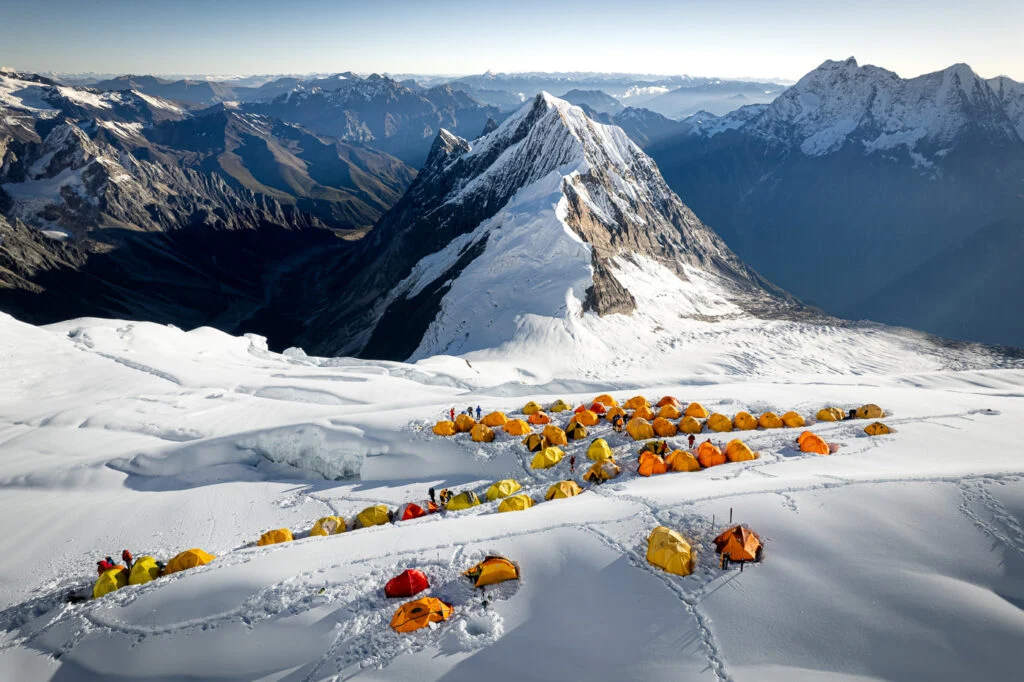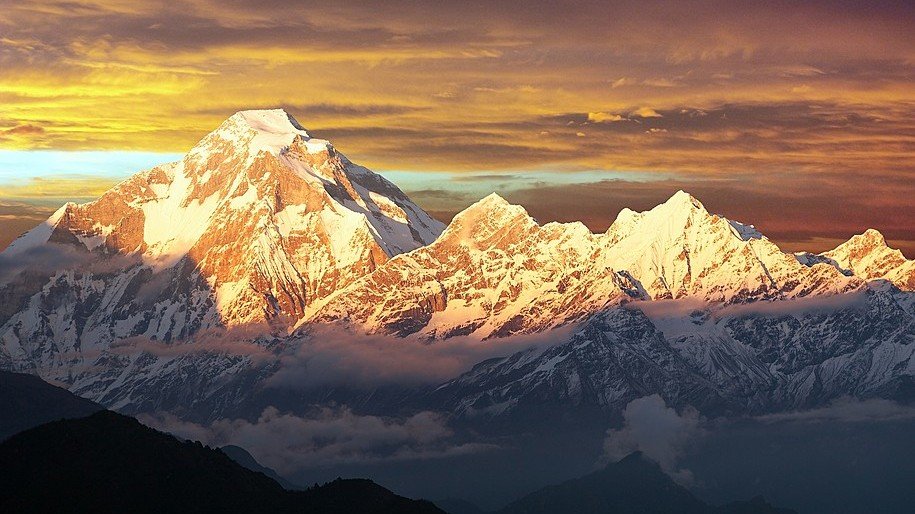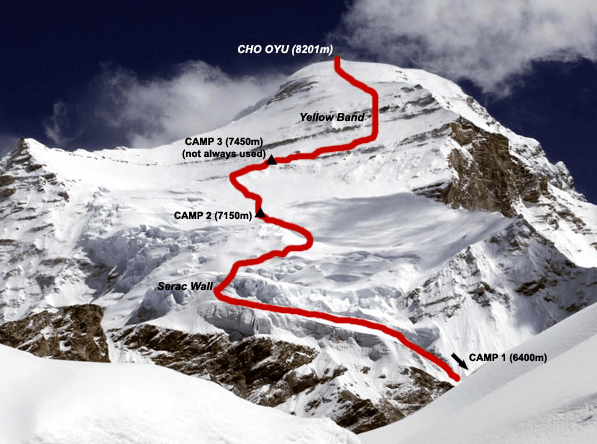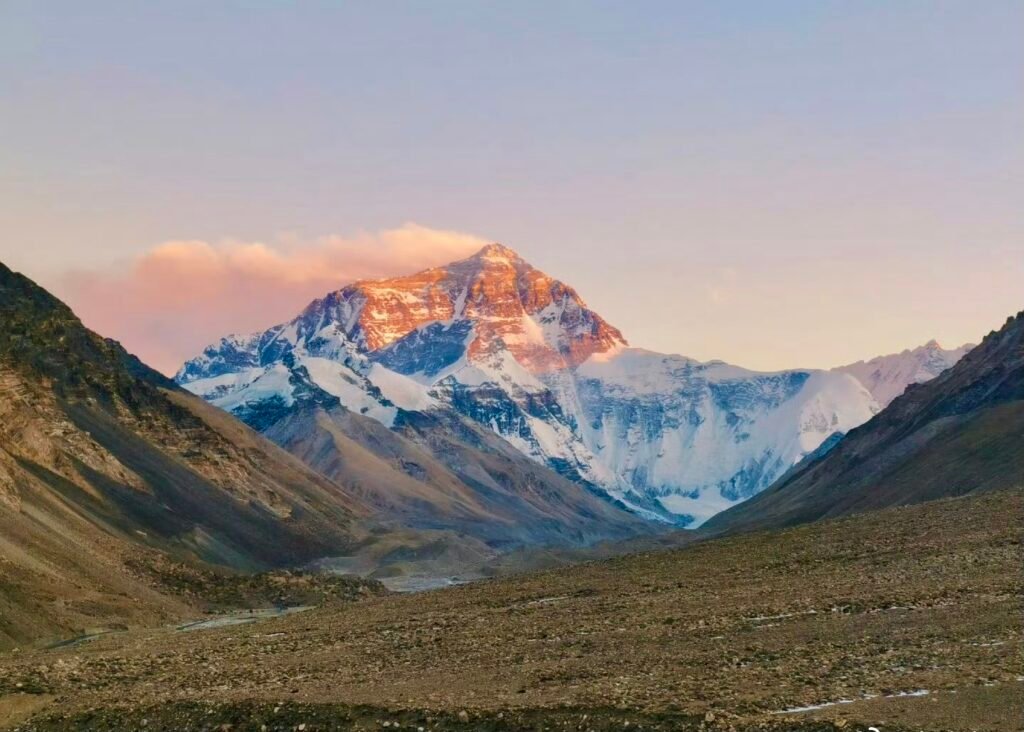Introduction to Shishapangma
Shishapangma, standing at an impressive elevation of 8,027 meters (26,335 feet), holds the distinction of being the 14th-highest mountain in the world. Located in Nyalam County of the Tibet Autonomous Region of China, it is notable for its unique status as the only eight-thousander that lies entirely within Tibet. This geographical specificity contributes to its allure among mountaineers and adventurers alike.
This majestic peak is a part of the Himalayan mountain range, which spans several countries in South Asia and is renowned for its towering summits. The Himalayas not only represent a significant geological formation but also embody a vital aspect of cultural and spiritual heritage for many communities living in their shadow. Shishapangma’s position within this grand range underscores its importance both geologically and in the context of climbing expeditions.
Tibetan Name: Shishapangma
Mount Shishapangma (རི་བོ་ཤི་ཤ་སྦང་མ་) has an elevation of 8,027 meters. This mountain lies in the central region of the Himalayas and is located entirely within the territory of China. It is the only mountain over 8,000 meters that lies completely within China’s borders. Due to the high elevation and harsh conditions around the region, all livestock such as sheep die, and no crops can grow, which gave rise to its Tibetan name “Shishapangma,” meaning “grassy plain/meadow that does not produce.” Another name for the mountain is Pholha Gönchen (ཕོ་ལྷ་མགོན་ཆེན) (Lord of the Sacred Mountain). According to ancient legends, this peak, along with the snowy mountain Molamonchen (གངས་རི་མོ་ལ་མོན་ཆེན་) at its northeast, were said to be a married couple.
The mountain was first summited in 1964, and since then, Shishapangma has drawn increasing interest from climbers aiming to tackle its formidable challenges. Its climb is often considered less technically difficult than some of the other eight-thousanders, yet the mountain presents unique challenges, including severe weather conditions and altitude-related difficulties. This combination of accessibility and risk makes Shishapangma a compelling destination for seasoned climbers seeking to expand their repertoire of high-altitude experiences.
Furthermore, the surrounding landscape of Shishapangma enriches its appeal, characterized by rich flora and fauna and stunning vistas that evoke the raw beauty of nature. As outdoor enthusiasts seek off-the-beaten-path adventures, Shishapangma emerges as a hidden gem within the Himalayas, deserving recognition among the world’s legendary peaks.
The Tale of Milarepa and the Silent Summit
Long ago, near the towering peak of Shishapangma, the great yogi Milarepa wandered in solitude, clad only in a thin cotton robe. Despite the warnings of local herders who feared the mountain’s fierce weather and protective spirits, Milarepa chose to meditate at its base, embracing the harshness as part of his spiritual path. As he sat in deep meditation, a violent snowstorm arose, and from the swirling wind appeared a wrathful dakini, guardian of the sacred mountain. She threatened him, but Milarepa responded with a spontaneous song, affirming his fearlessness and unwavering realization of the true nature of mind. His humility and courage softened the dakini’s wrath, and she granted him her blessing, recognizing him as a true yogi of the Dharma.
That night, in the midst of the storm, Marpa Lotsawa, Milarepa’s teacher, appeared in a vision and reminded him that even the highest mountains are nothing compared to the peak of inner awakening. By dawn, the storm had passed and Shishapangma shimmered in golden light. The locals noticed a change — the mountain seemed more peaceful, as if touched by the compassion of the great yogi. From that time on, it was said that Milarepa’s presence lingered in the winds, and that those who meditated there could hear his voice guiding them toward enlightenment.
Climbing Shishapangma: Routes and Challenges
Shishapangma, the 14th highest peak in the world, offers a range of climbing routes, with various difficulties to accommodate climbers of different skill levels. The easiest and most commonly utilized route is the snow and ice climbing path that ascends from the southern base camp. This route is characterized by its glacier approach, which provides an exciting yet approachable ascent for climbers. However, despite being categorized as the easiest, it does not lack its challenges.
One of the primary challenges climbers encounter on the Shishapangma ascent is the steep slopes, particularly as they move beyond Camp 2. Climbers must contend with sections that require the use of technical gear, including crampons and ice axes, for secure footing on icy terrain. Moreover, determining an appropriate weather window is critical, as conditions can rapidly change in the Himalayas. Sudden storms can create hazardous situations, making timing and preparation paramount for a successful summit attempt.
The transition from Camp 3 to the summit notably presents a significant challenge due to the infamous knife-edge ridge. This narrow traverse necessitates careful foot placement and mental fortitude, as one misstep could result in a severe fall. Many climbers opt to stop at the false summit rather than attempt this portion of the climb, recognizing the inherent risks involved. It has become common practice to establish fixed ropes along precarious sections to facilitate a safer passage. These ropes allow climbers to ascend and descend with greater security, reducing the potential for accidents.
In summary, while climbing Shishapangma rewards climbers with breathtaking views and a sense of accomplishment, the journey is fraught with challenges, demanding both physical endurance and a strategic approach to the ever-shifting weather conditions of the Himalayas.
Recent Climbing Milestones
Shishapangma, standing as the 14th highest peak in the world at 8,027 meters, has long been regarded as a challenging yet alluring destination for climbers. Its remote location in the Tibet Autonomous Region of China and unique weather conditions have made successful ascents relatively rare. Recent years have witnessed a surge in interest among mountaineers, culminating in exciting climbing milestones that showcase both individual accomplishments and the evolving culture surrounding this remarkable mountain.
One of the most momentous achievements occurred on October 9, 2024, when Arjun Vajpai made history by becoming the first Indian climber to reach the summit of Shishapangma. This unprecedented milestone is not only a testament to his remarkable endurance and skill but also significantly uplifts the mountain’s profile within the climbing community. Vajpai’s successful ascent adds to the inspirational narratives of high-altitude climbing, where perseverance and determination often yield groundbreaking results.
The ascent of Shishapangma by Vajpai marks a shift in perception about the mountain, encouraging climbers worldwide to explore its incredible yet demanding terrain. The increased visibility of Shishapangma — buoyed by recent successes — highlights the importance of both preparation and respect for the mountain’s unpredictable nature. Climbers and expedition teams are now more inclined to take on Shishapangma, transforming it into a recognized peak among serious adventurers.
These recent climbing milestones resonate broadly within the climbing culture as well. Celebrated successes not only elevate the individual climbers but also inspire future generations to embrace the challenges that come with high-altitude expeditions. As more climbers share their experiences and achievements, the allure of Shishapangma continues to captivate the adventurous spirit of mountaineers globally, solidifying its status as a hidden gem within the Himalayan range.
Cultural Significance of Shishapangma
Shishapangma, often referred to as the “Hidden Gem of the Himalayas,” holds a profound cultural significance that extends beyond its towering presence. The name Shishapangma is derived from the Tibetan language, where “Shisha” means ‘comb’ or ‘range,’ and “pangma” translates to ‘grassy plain’ or ‘meadow.’ This nomenclature reflects the mountain’s unique geographical features as well as its symbolic representation within the local landscape and communities. The naming convention itself conveys a sense of reverence towards nature intrinsic to Tibetan culture, illustrating how indigenous peoples interact with and interpret their environment.
Moreover, the mountain is woven into the rich tapestry of Tibetan folklore and spirituality. It is often viewed as a revered entity that embodies the spirit of the Himalayas. Local tales frequently highlight how mystical beings inhabit such natural wonders, making Shishapangma not just a geographical landmark but also a vessel for cultural narratives. These stories are essential in cultivating a sense of identity and belonging among the local communities. They reinforce the idea that the mountain is a guardian of their heritage, a bridge between the past and present, and a source of inspiration for future generations.
The relationship between Shishapangma and the surrounding communities illustrates an intricate bond shaped by shared history and collective beliefs. Local customs, rituals, and festivals often reflect this connection, celebrating the mountain’s significance in their daily lives and spiritual practices. Through various cultural expressions, such as art, music, and dances, the people honor Shishapangma, fostering a deep respect for nature that resonates through their traditions. In this way, the mountain emerges not merely as a physical challenge for climbers but as a salient symbol of cultural pride, resilience, and spiritual connection within Tibetan society.
